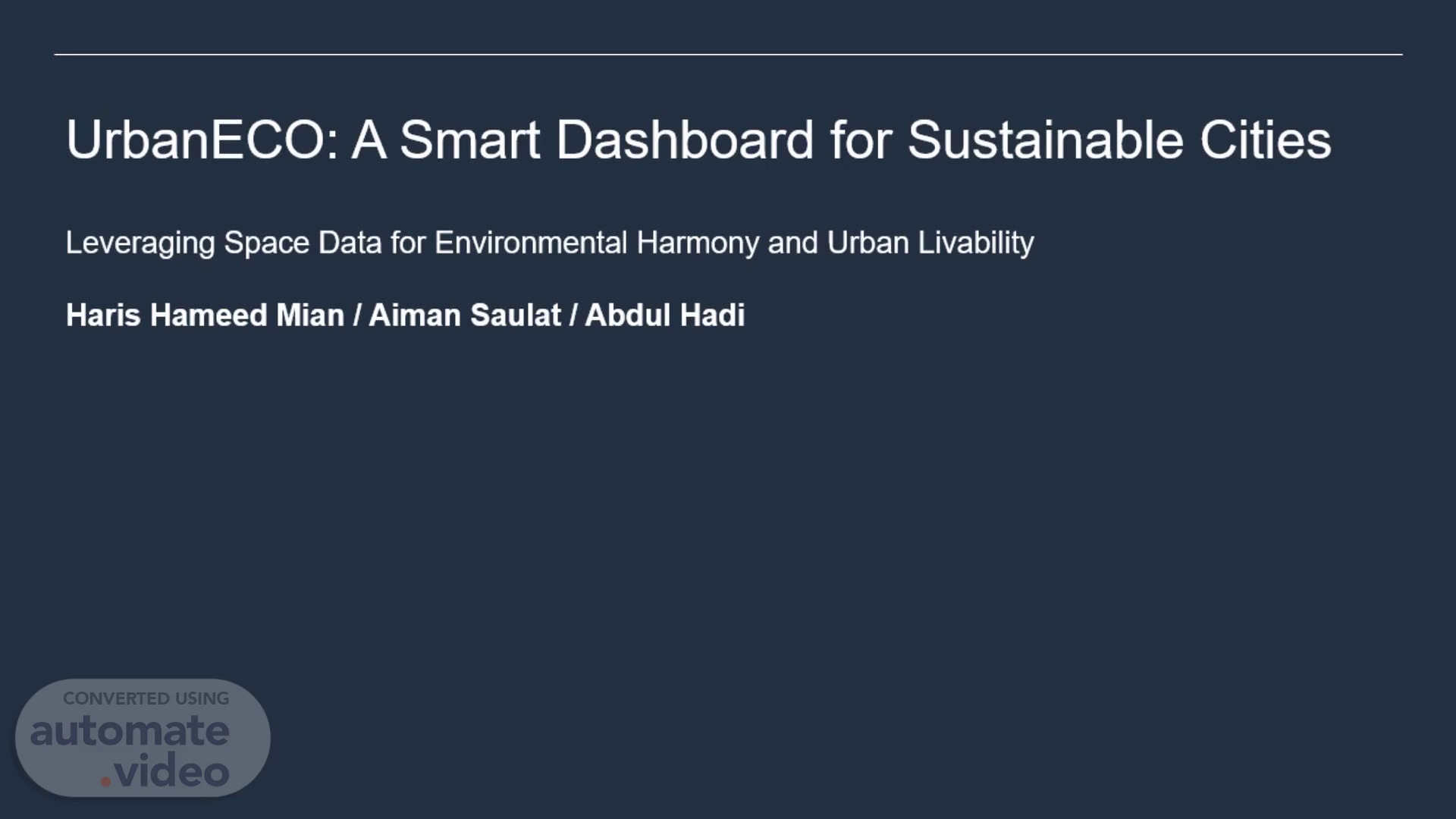
Page 1 (0s)
[Audio] UrbanECO is a concept for a Smart Dashboard for Sustainable Cities Leveraging Space Data for Environmental Harmony and Urban Livability. The contributors are Haris Aiman and Hadi..
Page 2 (47s)
[Audio] The Urban Sustainability Challenge Key Issues are Urban face pollution inefficient resource use and climate vulnerabilities. Residents lack real-time information on environmental factors affecting their quality of life. Utility companies and policymakers struggle with data-driven decision-making for sustainability. The impact of this is :These challenges threaten environmental harmony and urban livability..
Page 3 (1m 16s)
[Audio] Our solution to this is Introducing UrbanECO platform Platform Overview: UrbanECO is a smart dashboard leveraging Copernicus and Galileo satellite data. Provides real-time insights on air water soil quality energy usage and climate risks. Key Features: Green City Indicators: Monitor air water soil and climate data. Utility Optimization: Enhance energy water and waste management efficiency. Policy-Making Support: Equip local authorities with evidence-based tools.
Page 4 (1m 53s)
[Audio] Leveraging Space Data for Impact Data Sources: Copernicus Sentinel Satellites: For Earth observation (air water soil quality climate monitoring). Galileo Satellite System: For precise geolocation and transport optimization. Value Addition: Accurate real-time data ensures informed decisions for sustainability. Predictive analytics drive efficient resource management and climate resilience..
Page 5 (2m 24s)
[Audio] Contribution to Sustainability Supporting a Sustainable Economic System with Environmental Protection Economic Benefits and Alignment with European Goals.
Page 6 (2m 44s)
[Audio] Roadmap and Next Steps Phase 1: Concept Development & Data Integration Define indicators prototype dashboard and integrate satellite data. Phase 2: M-V-P Development Build core features (air quality monitoring utility insights planning tools). Phase 3: Pilot Testing Deploy in a select city gather feedback from stakeholders. Phase 4: Full-Scale Deployment Refine platform expand to multiple cities integrate IRIS² services..
Page 7 (3m 16s)
[Audio] This is just outlook of our dash board. Thank you for listening..